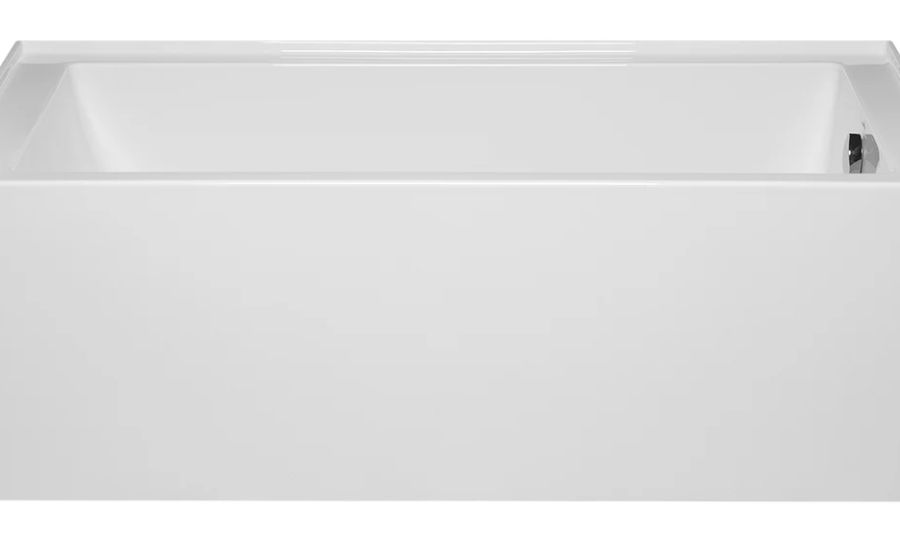1593.71-393.71 104 72, Understanding, Relationships, Performance & More
Introduction
Every day, numbers shape decisions across different contexts—business, education, and project management. Here, we’ll break down the potential meanings and applications of the numbers 1593.71, 393.71, 104, and 72, revealing insights they might hold when considered individually and in relation to each other. In this article we;ll read about 1593.71-393.71 104 72.
Understanding Each Number’s Context

1. 1593.71
- Financial Implications: This number often represents a monetary figure, such as revenue, balance, or even a total inventory count. For instance, in a business setting, 1593.71 could signify the total revenue generated over a certain period, such as a month, quarter, or year.
- Calculative Use: When paired with another number like 393.71, we can examine profit or net gain by calculating the difference, helping reveal business profitability or efficiency.
2. 393.71
- Expense Indicator: The number 393.71 might denote specific expenses or costs. For example, in a financial report, it could represent a particular cost incurred in operations, such as raw materials or labor.
- Expense Analysis: Subtracting this expense from a revenue figure, like 1593.71, gives a result that might represent net revenue or profit. In this case, the difference of 1200 suggests an overview of net gain.
3. 104
- Quantity or Score: This figure might reflect quantity or performance metrics, such as units produced or a score. In an educational setting, 104 could represent an exam score, potentially indicating above-average performance depending on the grading scale.
- Performance Evaluation: If used as a test score, it could indicate high achievement, helping educators or managers identify areas of strength and adjust strategies accordingly.
4. 72
- Time or Rating: The number 72 could relate to time measurements, like hours or days, essential for project timelines. It might also represent an index score or rating, providing insights into a task or performance metric.
- Contextual Use in Planning: If 72 signifies project days, it aids in scheduling and resource allocation. As a performance score, it may suggest average results, encouraging a focus on improvement.
Examining Relationships and Combined Implications
Total Calculation
- Adding all these numbers together offers a broader view: 1593.71+393.71+104+72=2164.421593.71 + 393.71 + 104 + 72 = 2164.421593.71+393.71+104+72=2164.42 This total could represent a comprehensive metric, such as a combined financial figure or an aggregated performance score. In business, it might be a financial summary reflecting revenue, costs, and other key figures.
Difference and Profitability Analysis
- Analyzing differences between these numbers can highlight efficiencies or performance indicators:
- Revenue and Expenses: For instance, subtracting 393.71 from 1593.71 yields a difference of 1200, which could signify net revenue, underscoring financial health when expenses remain lower than income.
- Revenue Comparison: Comparing 1593.71 with additional income or achievements (104), organizations can evaluate overall performance, spotting trends and identifying potential for improvement or expansion.
Efficiency and Strategic Insights
- By examining expense figures (like 393.71) against revenues or totals, it’s possible to gauge financial efficiency. If expenses trend high relative to revenue consistently, it may highlight a need for resource allocation changes or cost-saving strategies.
Practical Applications of Key Financial and Performance Metrics
Numbers like 1593.71, 393.71, 104, and 72 can play critical roles across finance, education, healthcare, and project management. Let’s explore how these figures can provide insights and help optimize operations within each field.
In Finance
- Revenue, Cost, and Profit Analysis: For any business, understanding revenue, cost, and profit metrics is essential for assessing financial health. In this case, subtracting 393.71 from a total revenue of 1593.71 yields a profit of 1200, which could support reinvestment or business growth.
- Strategic Budgeting: By analyzing this profit margin, businesses can allocate funds more effectively, balancing reinvestment with operational costs. This clarity helps businesses decide where to expand or optimize.
In Education
- Assessing Student Performance: Examining scores, such as 104 and 72, can help educators understand student outcomes. For example, an average score significantly below 100 could highlight areas where curriculum adjustments or additional tutoring might improve student performance.
- Improving Curriculum and Teaching: If the average score is lower than expected, it signals that instructional methods may need refining to better address student needs and learning styles.
In Healthcare
- Operational Efficiency: When applied to healthcare, numbers like 1593.71 (representing annual patients treated) and 393.71 (indicating cost per patient) allow for the assessment of cost-efficiency in patient care.
- Resource Allocation: By understanding these metrics, administrators can refine budgeting for medical resources, improving care quality while managing operational expenses.
In Project Management
- Tracking Time and Costs: In a project setting, 1593.71 could represent total hours worked, 393.71 the expenses associated with those hours, and 72 the days left to complete a project. By tracking these metrics, project managers can ensure the project stays on budget and meets timelines.
- Progress Assessment: Monitoring these numbers allows project managers to adjust resources and timelines proactively, aligning with project goals and deadlines.
Investigating the Enigma of “1593.71-393.71 104 72”: Theories and Perspectives

When encountering a numerical sequence like “1593.71-393.71 104 72,” its meaning can span various fields, from mathematics to digital technology. Let’s delve into some plausible interpretations that could explain its purpose and significance.
Hypothesis 1: A Mathematical Equation with Potential Applications
One explanation for “1593.71-393.71 104 72” could be mathematical. In advanced mathematics and physics, numbers and sequences often hold specific meanings within complex equations and algorithms.
- Possible Formula Component: This sequence could represent part of a larger mathematical formula or constant, much like the golden ratio or Pi, which appear in various contexts such as architecture and art. It’s possible this sequence reveals hidden patterns or is a step in solving an unsolved mathematical problem.
- Cryptographic Relevance: In cryptography, specific sequences are often used in algorithms to create encryption keys, which secure data or act as access codes. The sequence might be part of an encryption pattern used in digital security.
Mathematical sequences and numerical patterns form the backbone of many scientific advancements, making it plausible that “1593.71-393.71 104 72” holds a role in computations, encryption algorithms, or even predictive modeling. Algorithms that rely on numerical precision, for instance, help predict economic trends, weather patterns, and more.
Hypothesis 2: A Digital Identifier in Technology
In the digital age, unique strings and numerical identifiers organize and manage vast amounts of data. This sequence might be part of such a structure, possibly relating to:
- Product Serial Numbers or IP Addresses: Serial numbers and IP addresses uniquely identify devices and data points within networks.One possible unique identification for a product, an electronic equipment, or a system component in a data network is “1593.71-393.71 104 72.”
- Blockchain and Data Encryption: Blockchain technology relies on cryptographic hashes to ensure secure and tamper-proof transactions. If this sequence relates to blockchain, it could represent part of an encrypted transaction or a verification step within the blockchain ledger.
Digital identifiers play an essential role in cataloging and tracking information. Whether linked to user data, devices, or online transactions, these sequences are critical for maintaining organization and security across networks and systems.
Hypothesis 3: Symbolism in Art, Culture, and Philosophy
Beyond technical interpretations, numbers often carry significant symbolic meanings in art, literature, and cultural expressions. Could “1593.71-393.71 104 72” have a deeper, metaphorical purpose in art or philosophy, reflecting themes or hidden messages waiting to be uncovered?
Throughout history, artists and writers have used numerical sequences to convey abstract concepts, emotions, or moments in time. Numbers are sometimes chosen to express identity, spiritual ideas, or philosophical beliefs, adding layers of meaning to creative works.
For example, the number 42 is famously used in The Hitchhiker’s Guide to the Galaxy as a humorous answer to “the Ultimate Question of Life, the Universe, and Everything.” Similarly, “1593.71-393.71 104 72” could serve as a sign in a poem, story, or piece of art, allowing readers or viewers to deduce its meaning.It may symbolize a certain concept or even reflect a message only accessible to those who delve deeper into its context.
Numbers in Modern Art
In contemporary art, numbers often feature as central themes, especially in conceptual art that explores ideas like time, existence, or infinity. Artists might incorporate mathematical sequences or numbers to create thought-provoking visual or literary works that invite audiences to search for underlying significance. By using numbers in a non-literal way, these artists challenge viewers to interpret meanings beyond the visual, evoking curiosity and a desire to decode hidden ideas.
Could “1593.71-393.71 104 72” represent a subtle reference in a piece of modern art, symbolizing a broader idea or an encoded message? In art, numbers can act as symbols or guides, encouraging viewers to discover hidden layers and personal interpretations. The combination of numbers could signify anything from time to existential themes or be a creative signature marking a piece of art’s unique identity.
Whether as symbols of abstract concepts or as markers of identity, numbers like “1593.71-393.71 104 72” illustrate the endless possibilities in the intersection of art, culture, and philosophy, sparking intrigue for those who seek to uncover their deeper meanings.
Case Study: Financial Analysis of ABC Goods, a Small Business

Background:
ABC Goods, a small retail business, tracked various financial and performance metrics over the past year to understand its operational success and profitability.
Data Overview:
- Total Revenue: $1593.71
- Total Expenses: $393.71
- Additional Income: $104 (from online sales)
- Customer Satisfaction Score: 72 out of 100
Analysis:
- Profit Calculation:
- Profit = Total Revenue – Total Expenses
- Profit = $1593.71 – $393.71 = $1200
- This profit suggests a healthy financial position, enabling the business to consider potential reinvestment opportunities.
- Total Income:
- Total Income = Total Revenue + Additional Income
- Total Income = $1593.71 + $104 = $1697.71
- This total reflects the business’s cumulative revenue for the year, including additional income sources.
- Expense Ratio:
- Expense Ratio = (Total Expenses / Total Revenue) × 100
- Expense Ratio = ($393.71 / $1593.71) × 100 ≈ 24.6%
- With approximately 24.6% of revenue allocated to expenses, ABC Goods demonstrates efficient cost management, retaining most revenue as profit.
- Customer Satisfaction:
- A satisfaction score of 72 out of 100 suggests room for improvement in customer experience. Addressing customer feedback, the business can enhance its product or service offerings to boost satisfaction and loyalty.
Final Words
Understanding key numerical metrics like 1593.71, 393.71, 104, and 72 can provide valuable insights into various fields, from finance to education and healthcare to project management. By analyzing these figures in terms of revenue, expenses, performance scores, and timelines, organizations can make informed decisions, optimize strategies, and enhance efficiency.
Tracking and interpreting such data not only supports growth but also enables businesses and institutions to adjust proactively, continuously improving operations and outcomes.
FAQs
Q: What does the number 1593.71 typically represent?
- A: The number 1593.71 often represents a revenue figure or total inventory count, such as the total revenue for a business over a period of time (e.g., a month or year).
Q: How is 393.71 useful in a financial context?
- A: In finance, 393.71 might represent an expense or cost figure. For example, subtracting it from a revenue total like 1593.71 reveals the net profit, helping to gauge profitability and financial health.
Q: What might 104 signify in an educational or performance setting?
- A: The number 104 could be a score or a quantity, such as a test score, production output, or a count of completed tasks. In education, it might indicate an above-average performance depending on the grading scale.
Q: How can 72 be applied in project management?
- A: In project management, 72 could represent time metrics, like the number of days remaining to complete a project. It could also signify a score or rating, providing a quick overview of project progress or efficiency.
Q: Why is analyzing an expense ratio, such as the one calculated for ABC Goods, important?
- A: Analyzing the expense ratio (24.6% in this case) shows what portion of revenue goes to covering expenses. A lower ratio indicates efficient cost management, maximizing profit, and allowing for potential reinvestment.
Key Facts
- Profit Insight: By subtracting expenses (393.71) from revenue (1593.71), we obtain a profit of 1200, suggesting the business is financially healthy.
- Expense Efficiency: ABC Goods maintains an expense ratio of 24.6%, meaning just under a quarter of revenue goes toward expenses, which implies strong cost control.
- Performance Score: Scores like 104 and 72 can be used to evaluate achievements or customer satisfaction, providing feedback to improve services or processes.
- Project Timelines: In project settings, 72 could indicate days remaining, helping project managers schedule resources and plan deadlines effectively.
- Total Revenue Impact: Adding additional income (104) to total revenue (1593.71) increases total income to 1697.71, showing how diverse income streams contribute to overall financial growth.
These insights provide a solid foundation for making strategic improvements across various applications.
For more Information About Blog visit francherway





